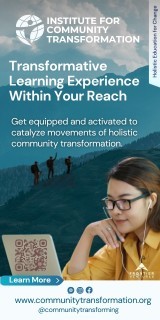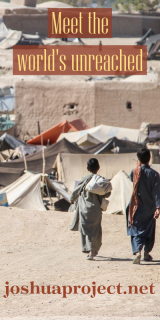Is There a Better Way?

One of the characteristics of a Purpose-Driven church is evaluating by purpose: “Is there a better way to fulfi ll each purpose?” That is my approach and the primary question raised here: Is there a better way to fulfill the purpose of the proposed Peace Plan?
I write from the perspective of a former pastor, and one who has been engaged in mission for close to thirty years as a mobilizer, lecturer, researcher, strategist and consultant (my current role), in addition to 14 years of church-planting and relief work among one of the largest Muslim unreached people groups in the world. I do not claim that these experiences give me omniscience or prescience! But they do help me keep a variety of perspectives and considerations in view as I evaluate this exciting proposal.
A close reading of the plan (first relayed to me after a June 2004 briefing) suggests two core objectives, first, the mobilization of every Purpose-Driven local church, small group and church member to be “on mission”; and second, the overcoming of the five “Global Giants” (Spiritual Blindness, Lack of Servant Leaders, Poverty, Disease, and Ignorance).
The former—mass mobilization of local churches—is presumed to be the preferred if not only means to achieve the latter—overcoming the Giants. To evaluate the plan properly, it may be helpful to separate these two purposes.
Mission leaders and missionaries I have talked to express concerns about the Peace Plan that seem to center around 1) the assumptions about field strategy—how (and which) “Global Giants” can and should be overcome; and 2) the relationship between local churches/small groups and other realities “out there” on the “field”—the “giants” and the varieties of existing ministries and churches, and multiplied thousands of complex national, politico-economic and ethno-linguistic contexts.
At least three things are open to discussion, if not debate:
a) The identification and prioritization of the “giants” (i.e., why the so-called giant of “Lack of Servant Leaders", and not others, e.g. "Gender Bias and Oppression" or "Environmental Degradation" or "Political Oppression[The Absence of Freedom aka Democracy]”?);
b) The conceptualization and implementation of effective field strategies, methods and means to overcome these (and/or other) giants;
c) The role of local churches—how best to mobilize and equip local churches for effective partnership in global missions at “the ends of the earth” and
in the darkest places of human need. What is the point—don’t slay giants? God forbid! Should churches hold back out of fear of making mistakes? No, not at all! Nevertheless, fighting “giants” does require that we keep the entire system and complex ethnolinguistic and missiological realities in view—not only at the planning (Peace Plan) stage, but also at the implementation stage (when “outsiders” in thousands of local churches attempt to put “boots on the ground”). Defeating giants means we need “Davids” to fight smarter, not masses who fight harder.
Purpose-Driven knows how to call pastors and churches to purpose. The most significant and strategic contribution a Purpose-Driven Peace Plan can make is in the area of mobilization—to find ways to call and awaken the church to mission and to point the way(s) to (rather than prescribe or facilitate) mechanisms for intentional long-term involvement with God’s global purposes.
What makes the Peace Plan (what I will now label a “mission mobilization plan”) unique is not its insight into “global giants”, or its proposed solution, not even the notion of getting local churches involved. This has been done before. What is unique is the connection of missions to a larger Purpose-Driven renewal movement that has touched and has access to tens of thousands of pastors and churches and small group members. That is, Purpose-Driven can call those churches to transformational mission in a way that few other programs can.
Thus, my bottom-line recommendation is that Purpose-Driven develop a program that is primarily a mobilization tool focused more pointedly on calling and educating local churches and small group members to fi nd their part in God’s global plan. The Peace Plan has the potential to help Christians and small groups learn how to shape their life in Christ—vision, priorities, values, worldview, lifestyle, giving, intercession, relationships, sending, going—around God’s redemptive purposes for the nations. This will not require a passport or money or a travel agent, necessarily, so much as a heart and life surrender. This is no small thing.








comments